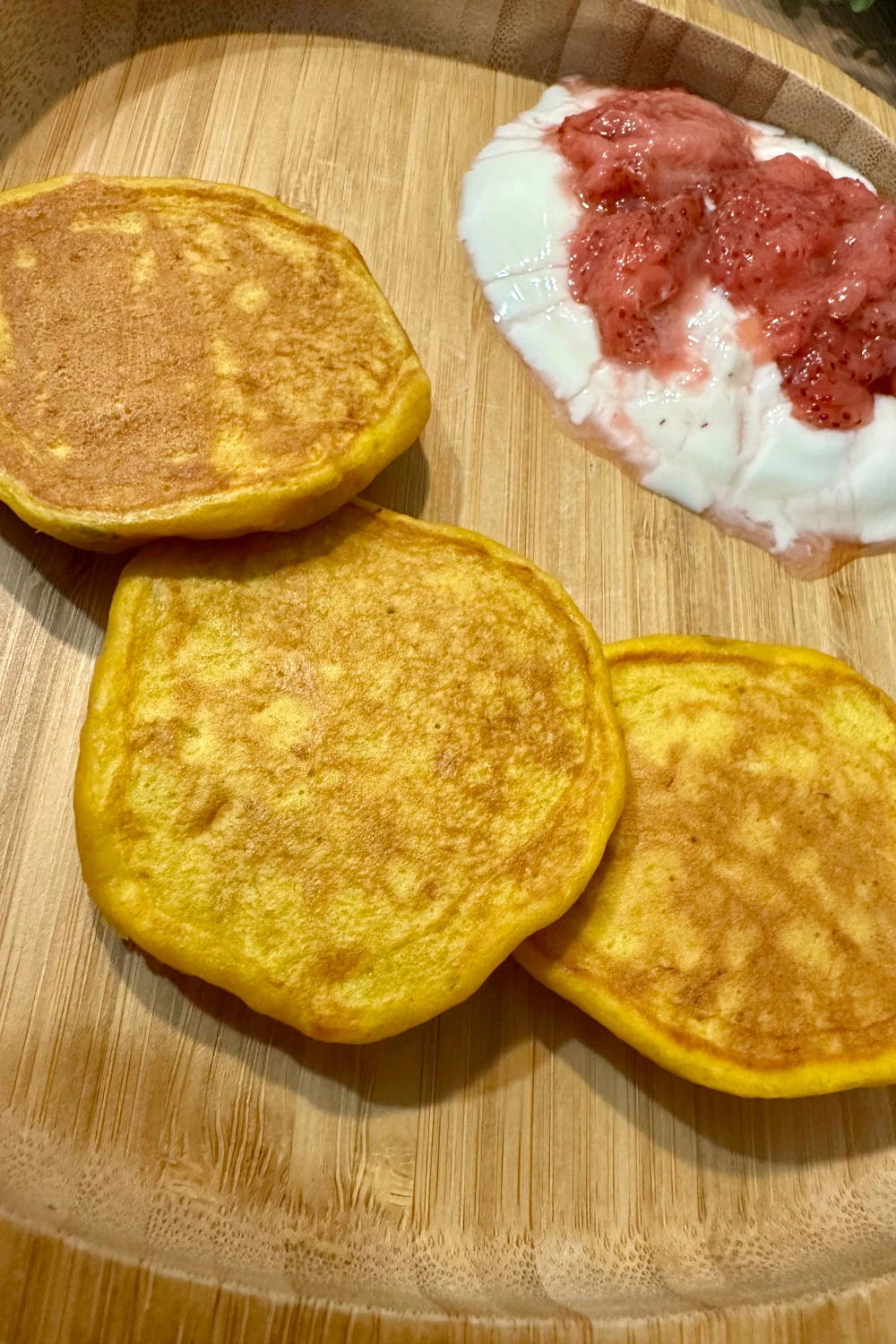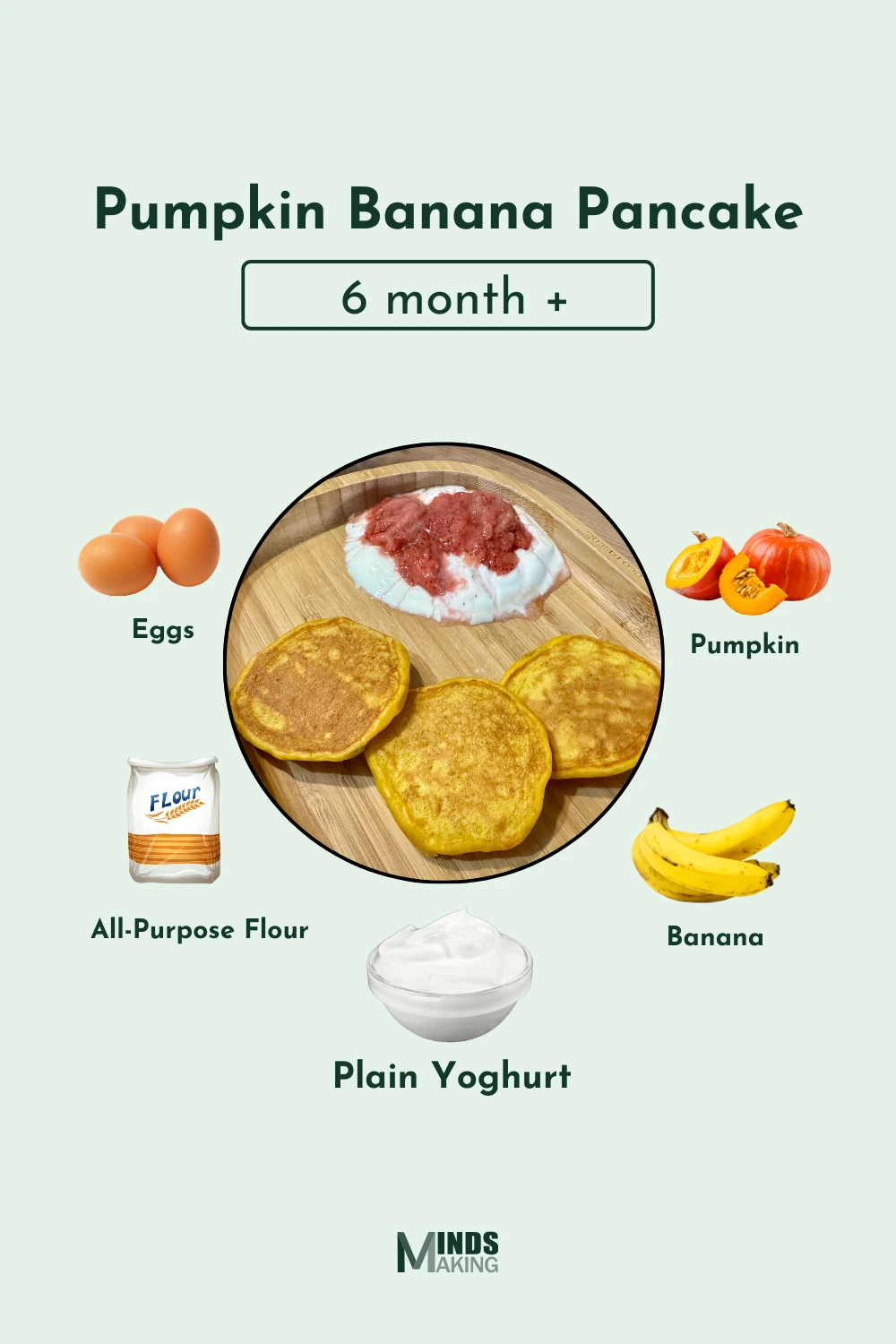Menu


Nutritious Ingredients: Made with wholesome ingredients like bananas, pumpkin, and eggs, they offer essential vitamins (A, C, potassium) and nutrients like fibre and protein.
Naturally Sweet: They are naturally sweetened with fruit, avoiding the need for added sugars, making them healthier for everyone, especially babies and toddlers.
Soft Texture: The pancakes are soft, making them easy to eat for all ages, from babies to adults.
Versatile and Customisable: They can be adapted to suit dietary needs (gluten-free, dairy-free, etc.) and customised with toppings or add-ins like fruits, nuts, or spices.
Convenient for Meal Prep: They can be stored in the fridge or freezer for a quick and easy meal, making them great for busy families.

Serve: Allow the pancakes to cool slightly before serving to babies and toddlers, and cut them into bite-sized pieces if needed. For older children and adults, serve with toppings like fresh fruit or a drizzle of syrup for added flavour.
Use Ripe Bananas: Make sure the bananas are overripe, with lots of brown spots. The riper they are, the sweeter and softer they will be, which makes them easier to mash and adds more natural sweetness to the pancakes.
Don’t Overmix the Batter: After adding all the ingredients, stir just until the dry ingredients are combined with the wet. Overmixing can lead to dense, tough pancakes instead of fluffy ones. It is okay if there are some small lumps in the batter.
Rest the Batter (Optional): If time allows, let the pancake batter rest for 5–10 minutes before cooking. This gives the flour a chance to absorb the liquid, resulting in fluffier pancakes.
Cook on Medium Heat: Make sure to use medium-low heat. Cooking pancakes too fast on high heat can cause them to brown too quickly on the outside while remaining undercooked inside. Slow and steady ensures even cooking.
Use a Non-Stick Pan or Griddle: Using a good non-stick pan or griddle will help prevent sticking and ensure the pancakes flip easily. You only need a light layer of butter or oil to coat the surface.
Check for Bubbles Before Flipping: Wait until bubbles form on the surface of the pancakes and the edges look slightly set before flipping. This ensures they are cooked through and not raw in the middle.
Make Pancakes Baby-Friendly: For babies under 1 year old, avoid adding sugar or salty toppings like syrup or butter. Cut the pancakes into small, manageable pieces to make them easy for little hands to grab.
Test first pancake: The first pancake is often a “test” to check the temperature of the pan. Adjust the heat as needed after your first batch to get the cooking time just right.
Sweet Potato or Butternut Squash Puree: These can be swapped 1:1 for pumpkin puree and will give the pancakes a slightly sweeter, earthy flavour.
Applesauce: Use ½ cup of applesauce in place of the banana for a different flavour profile while still keeping the pancakes moist.
Suitable from 6 months.
(based on 1 pancake, depending on size and ingredients).
Serve: Allow the pancakes to cool slightly before serving to babies and toddlers, and cut them into bite-sized pieces if needed. For older children and adults, serve with toppings like fresh fruit or a drizzle of syrup for added flavour.
© Mindsmaking 2024